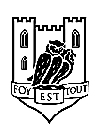This article has multiple issues. Please help improve it or discuss these issues on the talk page . (Learn how and when to remove these messages)
|
| Battle Abbey School | |
|---|---|
 | |
| Location | |
 | |
| , , TN33 0AD | |
| Coordinates | 50°54′50″N0°29′13″E / 50.914°N 0.487°E |
| Information | |
| Type | Independent day and boarding school |
| Motto | Foy est tout (Faith is all) |
| Religious affiliation | C of E / Inter-denominational |
| Established | 1912 |
| Department for Education URN | 114622 Tables |
| Head teacher | Hannah Blake [1] |
| Gender | Co-educational |
| Age | 3 monthsto 18 years |
| Enrolment | 360~ |
| Houses | St Mary's St Martin's St Etheldreda's St Patrick's |
| Colours | Maroon, White |
| Website | www |
Battle Abbey School is a private coeducational day and boarding school in the small town of Battle, East Sussex, England. [2] The senior school occupies part of the town's ruined abbey complex, and it is from here that the school derives its name. Originally formed as St Etheldreda's, in 1989 Glengorse and Hydneye was merged into the school. [3] [ better source needed ]
